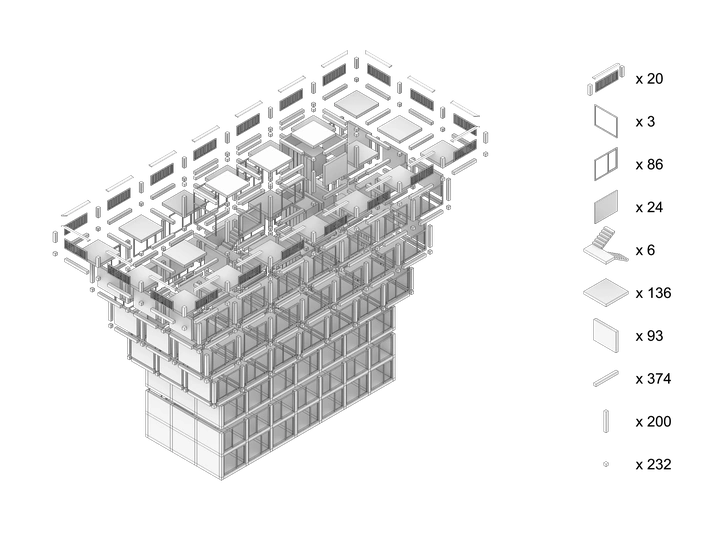Urban Scale Timber

Daniel Dieren
Julia Dorn
Niklas Haschke
Andreas Thoma
As an interdisciplinary team we combine architecture and design, civil engineering and urban transformation with software development and digital fabrication. We take the shift towards a systemic approach to our built environment as an indispensable step in the development of the construction industry. Only in this way, we can realise future climate-neutral cities that go beyond our current perspective and place any activity of building back into planetary thinking.
Through its potential as a carbon storage, timber can contribute significantly to reducing the construction sector’s 38% share of all global CO2 emissions. Funding programs incorporate the CO2-impact as foundational criteria and policies like the EU Taxonomy shift to establish timber construction as the new normal. Yet, ESG becomes a buzzword that few know how to incorporate practically. As the complexity of requirements in timber construction is increasing, the relevant expertise is not available on the market and sustainability is only considered relatively late in the planning process.
Urban Scale Timber develops automated feasibility studies with regard to building components, construction costs and life-cycle assessment (CO2 impact). In this way, scenarios can already be created at the beginning of the project conception, which serve as a reliable basis for decision-making.
Based on a prototypical digital twin that maps the core features of already realised timber buildings, Urban Scale Timber formalises the complex technical requirements of timber construction. Once the user has entered the desired geometry and typologies, our configurator generates construction grids and component assemblies by accessing a database of pre-approved timber assemblies. It analyses and compares possible variants in terms of their usable space, building masses and corresponding rough costs and LCA parameters.